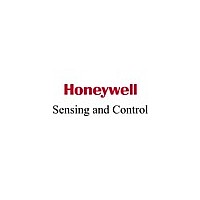AWM2100VH Honeywell Sensing and Control, AWM2100VH Datasheet

AWM2100VH
Specifications of AWM2100VH
Related parts for AWM2100VH
AWM2100VH Summary of contents
Page 1
... Guide Go with the flow of engineering leadership. All airflow sensors operate on heat transfer — flow and differential pressure. But Honeywell Sensing and Control (S&C) offers advanced chip design, manufacturing techniques and microstructure technology, allowing our microbridge to be notably faster, smaller and more sensitive. Our silicon chip design is created from a thin- ...
Page 2
... Flow/pressure range plus other advantages: Output amplified or un-amplified microbridge airflow; state-of- Power consumption the-art silicon micromachining; sensitivity to low flows (0.1 SCCM to 200 SLPM); accurate Port style low pressure sensing Media capability 0.003 mbar to 10 mbar Operating temperature range (0.0001 4 ...
Page 3
... Airflow Sensors AwM5000 Series Signal conditioning amplified Technology silicon die 0 SLPM to 5,0 SLPM, 0 SLPM to 10,0 SLPM, Flow/pressure range 0 SLPM to 15,0 SLPM, 0 SLPM to 20,0 SLPM Output analog Power consumption 100 mW max. Port style 1/4 in-18 NPT ...
Page 4
... Airflow Sensors line Guide Airflow Sensors AwM40000 Series Signal conditioning unamplified or amplified Technology silicon die Flow/pressure range ±25,0 SCCM, 1,0 SLPM, 6,0 SLPM Output analog Power consumption 60 mW max max. Port style manifold Media capability dry gas only -40 °C to 125 °C [-40 °F to 251 °F] ...
Page 5
... SCCM to 200 SLPM) • Enhanced response time • Low power consumption • Analog output • Cost-effective • High flow range capability in a small package • Highly stable null and full-scale • Compact package design • Extremely low hysteresis and repeatability errors • ...
Page 6
... Analog output • Cost- effective • Bi-directional sensing capability • Low differential pressure sensing • Actual mass airflow sensing • Enhanced response time • Unamplified • Mass flow and differential pressure sensing Benefits: Proven thermal bridge technology. Two versions available, mass flow and differential pressure ...






